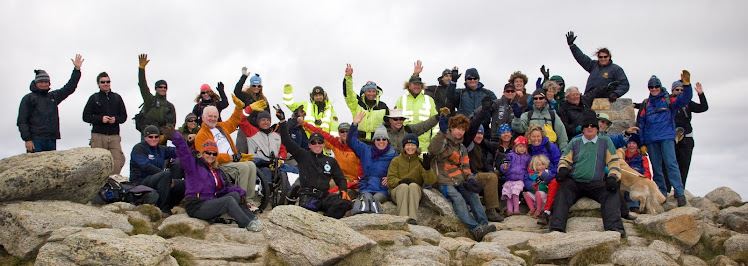The World Health Organization (2011) has produced an extensive research report on disability, which reviews evidence about the situation of people with disabilities around the world. It draws together the most recent sources to present a comprehensive overview of the major areas that affect the lives of people with disability. The report consists of 10 chapters including:
- Introduction
- Understanding Disability
- Disability - the global picture
- Genera health care
- Rehabilitation
- Assistance and support
- Enabling environments
- Education
- Work and Employment
- Recommendations
Interestingly, addresses many of the key concepts discussed in the blog including constraints and barriers to participation, universal design and market dynamics but the report does not mention tourism specifically. It does, however, draw attention to United Nations’ (2006) Convention on the Rights of People with Disabilities and how the articles relate to the importance of participation in all areas of citizenship. While it could be argued that the key chapters discussed in the report cumulatively provide a guide for developing accessible destinations, there is no doubt that the overriding priority of the report in ensuring that all people with disability have accessible environments, services and attitudes in their place of residence. Of course, once this has been completed for local residents, then the same local areas become accessible to tourists with disability visiting the areas.
With regard to travel, the report discusses the concept of the "travel chain" that is defined as
The “travel chain” refers to all elements that make up a journey, from starting point to destination – including the pedestrian access, the vehicles, and the transfer points. If any link is inaccessible, the entire trip becomes difficult (81). Many mass transit providers, particularly in developing countries, have implemented accessibility only partially, for example by providing a limited number of accessible vehicles on each route, making improvements only to the main stations, and providing access only on new lines. Without accessibility throughout the travel chain, the job is incomplete. Inaccessible links require taking an indirect route, creating the barrier of longer travel times. The goal must be for people to have access to all vehicles and the full service area, as well as the pedestrian environment (82). But progressive realization may be the most practical short-term response (WHO 2011, p.179).
Photo 1 shows a low floor accessible bus that is one part of a "travel chain" that also needs to be supported by for example accessible timetables, continuous pathways, tactile ground surface indicators and disability awareness trained bus drivers to name a few. In recognising the inherent pragmatism required to ensure the travel chain, this report together with the World Health Organization (2007) Global Age Friendly Cities, provides an impetus for nations and city states to meaningfully address the disability and ageing issues through creating sustainable approaches to these issues as part of addressing disability citizenship across all areas of social participation. The World Health Organization documents can be used to provide a foundation for providing a global understanding within local contexts and to draw the attention of those who are resisting the addressing of these issues. The document concludes by asking three questions that need to be addressed in a policy context: What do we know about people with disabilities?; What are the disabling barriers? And. How are the lives of people with disabilities affected?. In conclusion, the report makes nine recommendations:
· enable access to all mainstream policies, systems and services;
· invest in specific programs and services for people with disabilities;
· adopt a National disability strategy and plan of action;
· involve people with disabilities;
· improved human resource capacity;
· provide adequate funding and improve affordability;
· increased public awareness and understanding of disability;
· improve disability data collection; and
· strengthen and support research on disability.
Interestingly in my own first major report, Anxiety to Access (Darcy, 1998), these recommendations are not dissimilar and provide a sound blueprint for improving travel and tourism industry approaches to disability, access and accessible tourism.
References
Darcy, S. (1998). Anxiety to access: tourism patterns and experiences of New South Wales people with a physical disability (pp. 76). Sydney: Tourism New South Wales. http://corporate.tourism.nsw.gov.au/Anxiety_to_Access_p783.aspx
United Nations. (2006). Convention on the Rights of Persons with Disabilities. New York http://www.un.org/esa/socdev/enable/rights/convtexte.htm: United Nations General Assembly A/61/611 - 6 December 2006.
World Health Organization. (2007). Global Age-friendly Cities Guide from http://www.who.int/ageing/age_friendly_cities/en/index.html
World Health Organization, & World Bank. (2011). World Report on Disability, from http://www.who.int/disabilities/world_report/2011/report/en/index.html











As far as my own journeys go, it all began with my first international trip when I was granted a scholarship to study literature at Oxford University in the UK. Before then, I had only been from
ReplyDeletecheck out here: Supported Travel